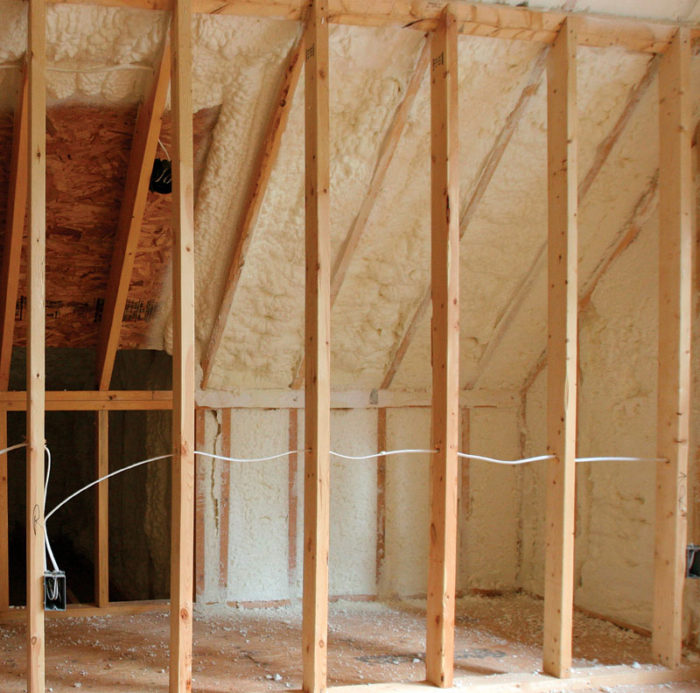
Making the attic a conditioned space:
Spray foam insulation can turn an attic into a conditioned space, but an Oklahoma builder wonders whether the approach is well suited to the larger homes he builds.Image Credit: Daniel Morrison
James Fincher is a builder in Oklahoma who’s leaning toward designs with conditioned attics insulated with spray polyurethane foam.
However, he’s not convinced that a conditioned attic is the best approach in a large home — something, say, in the 4,000 sq. ft. to 5,000 sq. ft. range.
The problem, as he puts it in his Q&A post, is the “sheer volume” of attics in a house this large, and whether the increase in volume will force him to use a bigger HVAC system.
The exchange that follows delves into the merits of conditioned attics — that is, those that are heated and cooled just like the rest of the house — versus unheated attics separated from the rest of the house by a layer of insulation on the attic floor.
That’s the subject of this week’s Q&A Spotlight.
First, reconsider the size of the house
Although the size of the houses that Fincher builds is not directly related to his question, some green building advocates may still wince. Brett Moyer is one of them.
“Since this a green building forum, I think I should say a couple of things,” Moyer writes. “You certainly have the right to build these ridiculously large monstrosities. You certainly have the right to install spray foams and foam sheathings, and place HVAC and ductwork in the attic.
I just hope you aren’t promoting these excessive dwellings as ‘green’ homes, because they are CERTAINLY not green.”
True, reducing the square footage of new houses is one way of reducing energy use while consuming fewer natural resources, both fundamental green-building objectives.
“Build a smaller, better, well detailed house that has more amenities and lower operating costs for…
Weekly Newsletter
Get building science and energy efficiency advice, plus special offers, in your inbox.

This article is only available to GBA Prime Members
Sign up for a free trial and get instant access to this article as well as GBA’s complete library of premium articles and construction details.
Start Free TrialAlready a member? Log in





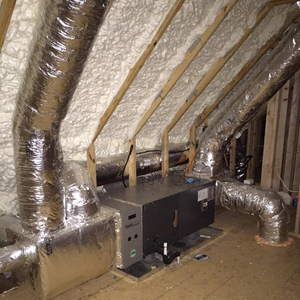
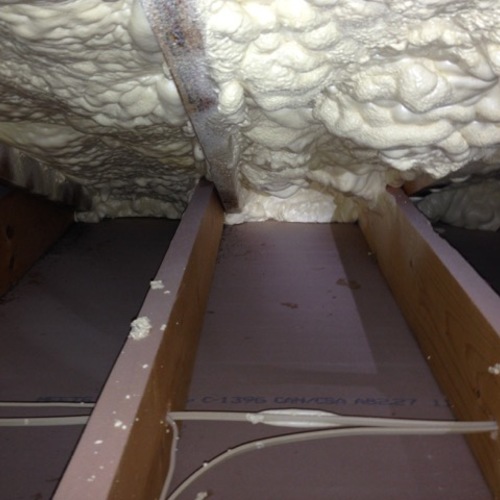
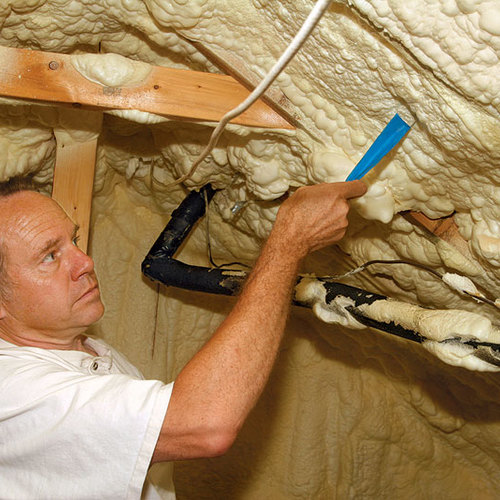
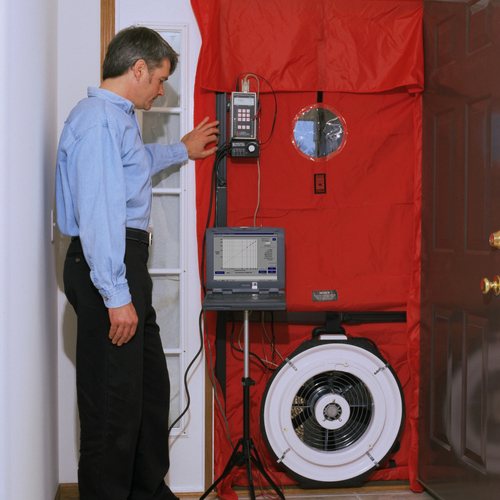






18 Comments
HVAC
Instead of conditioning the attic to accomodate the ductwork, why not eliminate the ductowork? A Split System varible refrigerent heat pump system may be the better choice. There are downsides to VRV heat pumps. They are not good looking, they cost more and you need to accomodate condensate drains. But there are advantages to VRV systems, besides the lack of ductwork. They allow for zoning of individual rooms, the refrigerent piping can be run in the conditioned attic, there is no combustible products in the conditioned space etc. It could be a Win-Win for you and the owner.
Basements are a wonderful thing
and they are real handy in a tornado too!
The links in this paragraph
The links in this paragraph do not go to any articles. I am interested in the debate on burying ducts.
And in addition to Martin’s suggestion of constructing a small attic mechanical room, there is Building America research supporting some performance advantages of “buried” attic HVAC distribution systems. Also, see this article .
I have done both
I do like putting attic's in the thermal boundary, while i do agree it adds to the volume of the house, if the house is (I am thinking of retrofits) more efficiant, and insulated to the eyeballs...would you truely have to upgrade the HVAC? If everything is done right you would reduce the load and needs for higher tonage. It has been argued that you should reduce the HVAC greatly!
I bring almost every crawlspace I come across, I bring into the thermal boundary & condition, the results (mostly in the cold winter months of NJ) have been great! I have a folder full of emails from satisfied customers raving about the work ( heating season in NJ is cold, by driving the heat upwards this is my little cheat that a lot of contractors in my area do not do). The reason I bring up the crawlspace work is simple, for those of you in hotter regions, the same would apply during cooling season. The cooling drops down into the living area, making comfort needs less. Now the winter months I agree heat would go up into the attic, BUT if you condition this space (when conditioning you want supply and return for air change, and efficancy) will you not be drawling in hot conditioned air from the attic?? The answer is yes, and that is huge for your system (it will cycle through warmer air faster making it run in less time!!)
Another method for those who are opposed to bring attic's into the thermal boundary. I do agree with building a room for the hvac (No I do not do it often but sometimes budgets, customers wishes, and well budgets get in the way) Build the room out of 2 inch thermax (must be thermax when in the same area as a combustion appliance). Tape all the seams of the thermax with UL181-AP cold weather tape (2 1/2 to 3 inch), and paint the foil tape with number 8 mastic. Now i have burried the sealed ductwork but you can even go a step further and 'box' out all of the ductwork with polyisocyanurate sheathing (2 to 3 inch) seal it (you can "dense pack" the boxes as well with all borate cellulose as well). Once you have your boxes installed and sealed with the tape, mastic, and 1 part foam (where the box meets the sheetrock) blow the attic with cellulose !! This method will work, you just have to make sure to air seal with 1 part foam, and seal the heck out of everything!!
Thats my 2 cents on the topic!!
House by house decisions.
It seems a bit obvious at this point (for readers of this site) that hvac equipment and duct work should not be in the attic (or other unconditioned spaces).
This piece seemed to focus more on the attic duct work and less on the typical issues of this debate that I was expecting.
What about the idea of eliminating uncontrolled ventilation in exchange for controlled? What about when attics are useful living space? What about the benefit of keeping the thermal and the air barrier in complete and continuous alignment? Such as: Sip panels on the roof, dense pack in the rafters, etc.
Roof vents leak, and many attics become ideal spaces for critters to nest.
Uncontrolled ventilation also brings in moisture.
Just like eliminating the vents in the old crawl spaces and treating the outer boundary (rather than the floor). Doing this adds conditioned volume, with many other benefits to potentially offset that volume. But yes, design less volume if you dont need it.
"You certainly have the right to install spray foams and foam sheathings. I just hope you aren't promoting these excessive dwellings as ‘green’ homes, because they are CERTAINLY not green.”
-Really Moyer? Installing ISO board on the exterior of a house and reducing the heating load from 200k btu to 15k-30k btu cant be considered green? What if that foam board is salvaged (is that ok)? Is a large building ruled out from being green despite the number of occupants? Certainly not.
Sure, design and build better more efficient roofs and attic spaces...Or properly insulate the one you already have, and enjoy the larger space that is already right under your roof.
"Ridiculously large monstrosities"
I wonder how many prospects Moyer has converted into clients after lecturing them on building ridiculously large monstrosities. It's the client's money and they have the right to build the size of house they want, in spite of our feelings. I don't think it's ours to (openly) judge. It's our responsibility to make their homes as sustainable as we know how.
Question for my space
Hi everyone, We have a 1 story cape with a full basement and full attic (at least 1/2 you can walk down the center and the other half was roughed in by the prior owner). For the rough in area, were planning to turn into a room. We had blown in across the floors throughout both areas. In the rough in area, we put insulation in the ceiling. We plan to sheetrock and put a floor down. We have electric heat down in the house. Its 1973. We have no cooling. My question is for the rough in room. We'd like to get heat and cooling in it. What is our best source(s)? thanks, Jeff
Designing it right the first time
Lots of good stuff here
Let me add some insight into the issue of getting it designed right to begin with, ie, the HVAC INSIDE the thermal env. Some architects do get it, please, recomend them all the time so they can stay in business.
There is a reason so many architects don't "get it". I'm an architect, I get it, I'd no more think to ignore MEP than ignore putting on a front door. I worked my way through college with an MEP. Alas, I was fired a year ago, along with most of the rest of the techical staff, leaving 2 out of 20 well rounder or "technically oriented" architects, and 18 out of 20 who wouldn't remember to put the HVAC in until the GC asked where it was at bid time. But, it'd be one sexy building, with the most expensive recycled countertops money could buy.
Each economic cycle the design architects, who are seen as "bringing in the work", and at the least can talk the talk and walk the walk with the boss, who is no doubt also a design architect, are retained, while the more well rounded, or even technically oriented architects are fired.
It's been bleeding the profession for decades. This massive recession is going to make it much worse.
I can't find work because I'm 1. Over 50, look around an architects office, they like 'em young, they think it's easier to tell them what to do, and then complain they never get anything right, like joining two windows with caulk, yeah, that'll work. 2. I Am not expert ACAD drafter. Now, with 30 years experience I should not be on the boards, but making sure jobs are produced correctly and efficently in addition to being constructable, in budget, energy efficent, all that due diligence you'd think any architect would just put into their work without thinking about it, yet don't. However, all the designers, who tend to be the ones incharge of architects offices see is the need for drafters to draw up their designs, if you can't do that, you have nothing to add to the firm.
Remember this next time you're trying to explain to a client why YOU want to change the architects plans or even design. Have the client ask to see the redmarks from the quality control, notes from the MEP sections of the design manuals / files (vs the samples in the finishes section or design sketches), comparative energy calcs for various design options, etc. You'll be lucky to find an MEP section, it'll certainly be 1/10 the size of the others, yet, that will determine the second biggest cost of home ownership, heating, cooling, lighting, costs and repairs to MEP systems. Might also ask for the credentials of the person doing the QA (quality assurance) reviews, assuming any were done.
Response to Jeffrey Sowa
Jeffrey,
Q. "We'd like to get heat and cooling in it. What is our best source?"
A. If you are converting part of an unconditioned attic to a conditioned room, the usual heating and cooling sources will be the same as you have elsewhere in the house. If your existing house has a hydronic heating system, then install hydronic baseboard units or in-floor hydronic heat in your attic room. If your existing house has a forced-air system, install that upstairs as well. If your existing cooling system consists of room air conditioners, you'll probably need one for your attic.
If all this is new to you, you should probably talk to an HVAC contractor.
Conditioned attics and heat gain
There are some basic building science misconceptions contained in the responses to Mr. Fincher's quandary. First, its not a "conditioned" attic unless it is specifically provided with supply air, and if so, by code it must be finished out as habitable, otherwise it is more correctly known as an "unvented" attic. Second, warm air rises, but heat moves from warm to cold without regard to direction, this is an important distinction when evaluating insulation and barrier placements. Third, and most significant, heat gain calculations used for HVAC sizing don't care how much volume is involved. The formula uses only surface area and temperature differential. So while insulating the roof deck to create a unvented attic increases the surface area in the calculation, the temperature differential is significantly reduced. For instance, the heat load calculation in our area of southeast Texas uses a design value for a vented attic of 120 -130 degrees inside the attic vs 75 degrees for the conditioned interior. For an unvented attic, the exterior air temperature (90 degrees) becomes the design value, reducing the differential in the load calculation from 45 degrees to 15. That's at least a 60% reduction in potential load. The insulation value also changes from a typical R30 at the ceiling (i.e., floor) and hot walls of a vented attic, to R19 at the roof line of an unvented one. Unfortunately the formulas do not take into account the reduction in air infiltration provided by the spray foam installation which has an arguably greater impact on HVAC performance than R value.
In our experience a foam insulated envelope results in a typical reduction of 2 tons for the cooling equipment, in a 3500 square foot design with R19 walls & R30 ceiling in fiberglas vs R13 walls and R19 roof deck in foam.
When made a priority it is relatively easy to incorporate living level mechanical rooms in a 3500 square foot design that is 5000 square feet of total frame, not so easy when the house is all in at less than 2500 square feet. But foam doesn't always make sense. A change to a recent fiberglas insulated custom project, with mechanical rooms and ducts inside the thermal envelope, required the addition of a trunk run in the vented attic in order to condition a storage space above the garage. Constructing a properly sealed and buried chase for the trunk run in the shallow and narrow 4/12 pitch attic was going to be a pain, so we ran the numbers to support a change from the R30 fiberglas ceiling to a R19 foam roof. Unfortunately the HERS rating came back several points higher. While the square area went up a relatively small percentage because of the low slope, the R value reduction allowed more gain than the R30 ceiling. Had the ceiling base case insulation been closer to code minimum, the results would likely have been different.
Response to Jim Schultz
Jim,
I disagree with a few of your points.
You wrote, "First, its not a 'conditioned' attic unless it is specifically provided with supply air, and if so, by code it must be finished out as habitable, otherwise it is more correctly known as an 'unvented' attic."
The code defines conditioned space as "space within a building that is provided with heating and/or cooling equipment or systems capable of maintaining, through design or heat loss/fgain, 50°F during the heating season and 85°F during the cooling season, or communicates directly with a conditioned space."
There is no requirement that the space be "finished out as habitable."
You wrote, "The insulation value also changes from a typical R-30 at the ceiling (i.e., floor) and hot walls of a vented attic, to R19 at the roof line of an unvented one." But the code does not allow lower levels of insulation when the insulation is installed between sloped rafters instead of on an attic floor. In southeast Texas (climate zone 2), the 2006 IRC requires a minimum of R-30 ceiling insulation, whether the ceiling is flat or sloped. R-19 insulation would be less than the minimum value requred by the prescriptive code.
unvented attics
The math gets complicated, esp when dealing with preferences and case-by-case siruations, but the bottom line hasn't changed since we started experimenting with these designs: put your entire HVAC system inside the thermal envelope/air barrier, i.e. below the ceiling, construct the best air barrier you can, use the max recommended amount of blown cellulose, ventilate the attic in accordance with best practice for your climate zone, and spend the savings on other energy conserving components.
Second response to Jim Schultz
Jim,
Sorry, I have to disagree with you again.
You wrote, "And to my knowledge, the IRC does not concern itself with R values."
The IRC certainly concerns it self with R-values. In the 2006 IRC, minimum prescriptive R-value requirements can be found in Section N1102.
Most builders following the prescriptive code simply follow the minimum R-value requirements detailed in Table N1102.1. This table specifies minimum R-values for ceilings, wood-framed walls, floors, and basement walls, among other building assemblies.
[Later note: in response to my comment, Jim Schultz went back and edited his previous post to remove his statement that "the IRC does not concern itself with R values."]
I stand corrected, sort of...
Martin,
My apologies to the readers, we can all be victims of our circumstances. Yes, I failed to verify my statement regarding habitability. My comment was based on a one time advice of an HVAC contractor (which he now denies having said) and/or an "education" by a field inspector. Either way they would have been and are, as you point out, incorrect regarding the connection between "conditioned" and "habitable". There is no such requirement. Since we don't install supply in unvented attics, the efficacy didn't concern me much, but I shouldn't have repeated it without fact checking. I do however stand behind the definition distinction between 'conditioned' and 'unvented'.
Yes, whether flat or sloped, the required R value for a 'ceiling' below a vented attic, or vented rafter bay (i.e.,a sloped ceiling/roof assembly) does not change. It does not matter whether the 'attic' is large enough to walk around in, or is simply the baffled air channel, its still considered at 120-130 degrees. It does change in the unvented condition because the same sloped ceiling, unvented, can also be defined as a sloped 'wall' in terms of the heat gain calculation temperature differential. Granted that plan review or field inspection may not see it that way, but the battle does undisputedly change to 90 degrees.
And I suppose I should have defined 'recent'. Governed by the 2000 IRC, the project I mentioned had a prescriptive method minimum ceiling requirement of R19 or R26 as defined by IECC, Chapter 5, Table 502.2.2.4, Envelope Requirements, as adopted by the City of Houston, when the project was permitted. In that table, the minimum ceiling value for a Type A-1 Building ranged from R19 with 8% glazing to R26 with 18% glazing to R30 with 20% glazing and above. In the IRC Table N1102.1 the ceiling minimum for Zone 4 was R26. The ceiling minimum for Zone 2 was R19. The requirement didn't reach R30 until 2000 heating Degree Days, which I believe is Zone 5. Again, I don't think about the specifics too much because our particular base case is never minimum.
But to clarify the details further, while R30 is one of the IRC/IECC ceiling (and hot wall) requirements, as far as minimums, it is still only one of several scenarios depending on climate zone, glazing, etc., isn't it?
At any rate, thanks for keeping me honest.
I know, I did it again.
I forgot Chapter 11. I edited my earlier reply accordingly, but you're too quick!
I saw this article and noticed it was dated 2011 but I have a few quick comments without any editing.
My company performs HVAC designs predominately for homes in the Southeastern US. We are also spray foam and crawlspace encapsulation specialists. We almost exclusively install open cell foam in wood framed walls and attic assemblies, and we install only closed cell foam in crawlspace encapsulations. We typically let the location of the HVAC system determine where we encapsulate.
1 story slabs - encapsulate the attic with the HVAC located in the attic
2 story slabs - encapsulate the attic with the HVAC located in the attic
1 story crawlspaces - encapsulate the crawlspace with the HVAC located in the crawlspace.
2 story crawlspaces - encapsulate both the attic and the crawlspace with a separate HVAC system located in each space.
We do not like to use ductless mini-splits anywhere except bonus rooms and even then rarely do we recommend them.
I agree with Steve Baczek that mechanical rooms rarely work as planned but I do not like buried hvac ducts in our climate (I cannot speak for other climate zones).
I grew up working in cellulose manufacturing and installation and now I believe spray foam to be the superior product when all factors all considered. We use accurate Wrightsoft HVAC software and Excel cost comparisons to back up those opinions.
Consider your referenced example where the spray foam was $12000 more than cellulose insulation. With a 30 year mortgage at 4.25%, that relates to an approximately extra $59.04 (12 x $4.92) per month. My company makes foam scalable without all the added details and labor of building mechanical rooms or soffits, etc. It is more energy efficient, it is much less dusty, and you do not have the smell that most cellulose has these days due to ammonium sulfate.
I will choose 6" of open cell foam in the rafters of a home in place of R38 or R49 of cellulose anytime. I will take it a step further and note that most cellulose coverage charts are way overstated and that blowing an R38 or R49 based on the manufacturers coverage chart results in a much lower R value.
[email protected]
Many or most of the comments reflect a basic misconception; that heating load is directly related to the volume of the structure. It's not. It's directly related to the area of the thermal envelope and indirectly to the volume. Placing the attic inside the envelope increases the area of the envelope but typically not proportionately as much as the volume is increased. In some cases, you can actually reduce the envelope and increase the volume (a long knee wall for example). So here's the elephant in the room for all you small house proponents: All things being equal small homes have a much higher ratio of envelope to floor space or volume than do large homes. So in that specific sense, small homes are less efficient. And, in fact single family homes are likewise inefficient compared to, say, townhomes.
Also, can we talk less about nominal R values and more about effective R value? Ceilings are typically more difficult to insulate than roof decks and way more difficult to air seal. Yes, including the attic space will likely increase the heating/cooling load but I am convinced that the cost is usually over estimated.
When discussing the idea that small homes are less efficient than large homes (by some metrics), its always important to consider which metric matters to you.
Energy per unit floor area?
or
Energy per occupant?
Log in or become a member to post a comment.
Sign up Log in